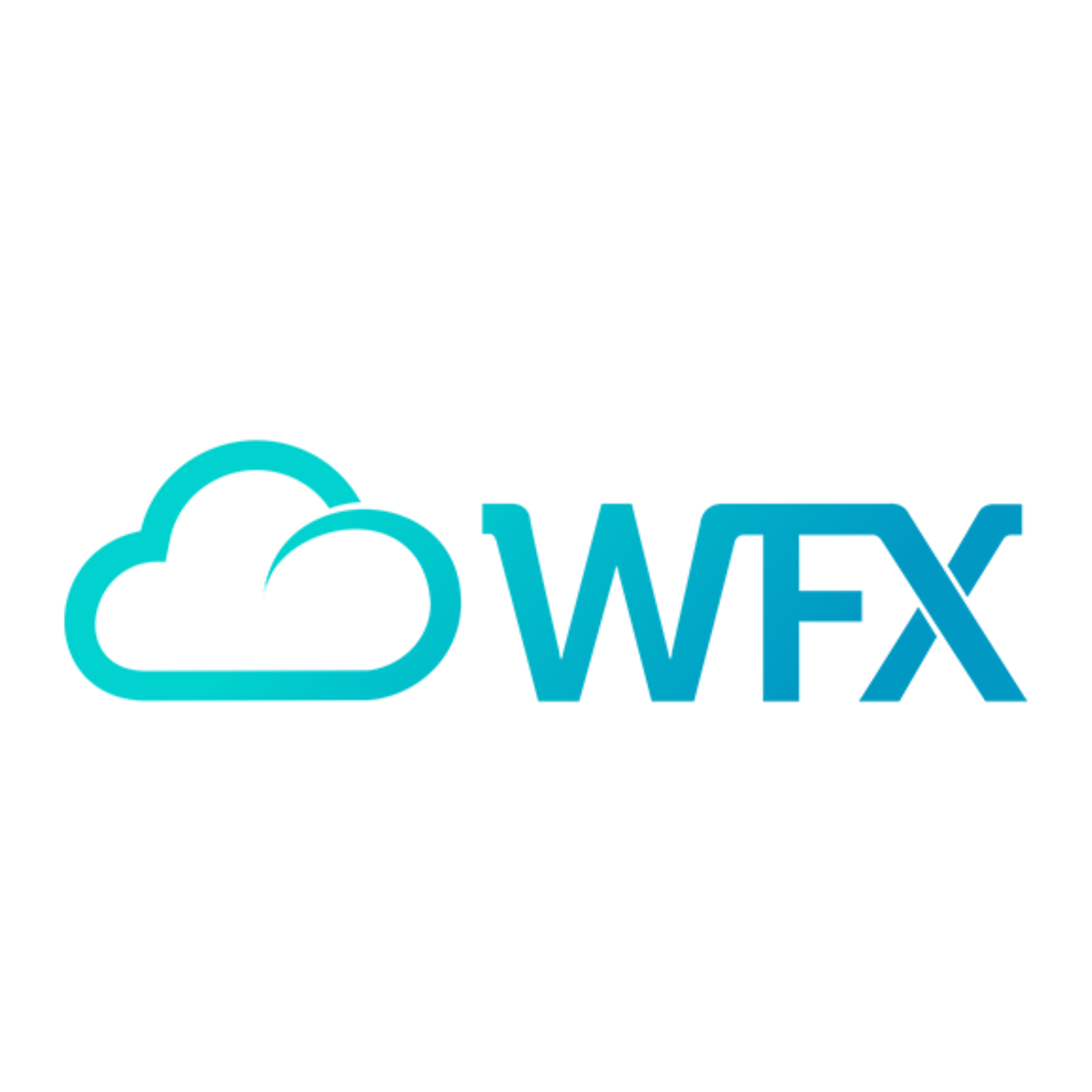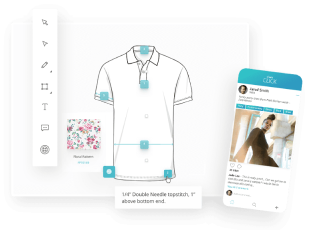Best PLM Software for Fashion in 2024: How to Choose and Implement
Introduction
Companies and manufacturers that need to design, source, manufacture, and distribute fashion products all over the world want a single source to manage all their data and procedures. To handle this, Product Lifecycle Management (PLM) software has emerged as the one-stop source of truth for managing all aspects of a product, from early concept development to its retirement.
Before jumping into the nitty gritty of how you can find the best PLM software for fashion in 2024, let’s take a brief look at what PLM software is and what it can do for the fashion industry. PLM not only simplifies the process of generating new product ideas and tracking product development, but it also enables faster, more sustainable, and collaborative product creation.
With a unified view of essential data—like materials, design changes, workflows, and compliance requirements—PLM systems allow teams to collaborate seamlessly from anywhere in the world. This ensures everyone is working with the most up-to-date information, reducing errors and speeding up time-to-market.
More than 100,000 businesses globally are using PLM software in 2024 to manage their operations. In this post, we’ll explore some of the top options available to help your fashion business thrive.
Advantages of Fashion PLM for Fashion Brands
The capacity to access and exchange information from a single central platform is the most important feature of PLM software. This enables the consolidation of procedures and smooth tracking, which contributes to the benefits outlined in this section.
- Integration of Product Data
With product data being used by nearly every department in a company, it can quickly become outdated. If data is not stored and maintained in a central repository, departments may end up working with outdated information. A PLM system ensures that everyone operates from the same, up-to-date source of truth.
- Reduce Development Cycles
The end-to-end integration of product data makes it easier for design, development, sourcing and other teams to cooperate more easily during the development stage. A product can be virtually created, reviewed, assessed, and manufactured while also leveraging other manufacturing technologies. This can help shorten development cycles.
- Cost Reduction
Companies using a PLM platform develop a central repository for their design and material data. This means that when developing a new product, some of the work may already be completed. Lessons learned from previous projects can be applied to avoid costly mistakes, reducing overall expenses.
- Higher Product Quality
When the entire organization has access to the PLM platform, design and development teams can gather valuable information from Sales, Marketing, and Customer Service departments. A central repository allows teams to access real-time data and correlate it with planned or suggested product developments, which is particularly beneficial for the fashion industry.
- Enhanced Productivity
PLM helps businesses improve operational efficiency by eliminating non-value-adding activities and streamlining workflows wherever possible. With tech pack templates and automation, users can quickly generate product information without switching between systems and starting the workflow manually.
The Best Fashion PLM Software in 2024
PLM boosts fashion product development by facilitating collaboration, optimizing workflows, and delivering tools for effective project management across departments and lifecycle stages. Below, we’ve listed the top PLM software options for your reference:
1. WFX – World Fashion Exchange

WFX PLM stands out as a 100% cloud-based platform designed specifically for the fashion industry. Its built-in integration with popular design tools, ERP systems, and sales platforms means seamless management of all your processes from idea to sale. WFX delivers an end-to-end solution that is scalable, versatile, and built to handle the complexity of fashion businesses.
Where most PLMs struggle to offer true flexibility across industries, WFX is tailored exclusively for fashion. It addresses the unique needs of garment companies and adjacent sectors like accessories, home goods, and footwear.
With a user-friendly interface, WFX is accessible to businesses of all sizes, whether you’re scaling up a global brand or managing a smaller operation. It emphasizes real-time collaboration across global teams, ensuring nothing gets lost in translation.
Key Modules:
- Line Planning
- Buying Plan
- Design Inspiration
- Artwork
- Adobe Connector
- Product & Material Library
- Tech Pack
- RFQs
- Costing
- Sample Feedback and Approvals
- Vendor Compliance
- Purchase Order and Production
- Final Inspection
- Shipments
- Vendor Portals
Customers: SKIMS, Everlane, Gorjana, Forever New, Cult Gaia, Showpo, Mexx, Belstaff, Benetton India
Pricing: WFX runs on a flexible pricing model where you only pay for the modules you use. Reach out to the WFX team here for a quote.
2. Uphance

Uphance is a cloud-hosted, hybrid, and on-premises apparel management software designed for small and medium-sized fashion firms who want to manage their operations more smoothly. Uphance places a greater focus on operations (e.g., inventory and billing) and less on the design and development aspects of the business.
If managing inventory, orders, and invoicing is your primary concern, Uphance offers solid tools, but it might fall short in offering advanced PLM features for growing fashion brands that need more robust design and collaboration tools.
Key Modules:
- Order Management
- Inventory Management
- Billing & Invoicing
- Cataloging
- Materials Management
- Product Management
- Production Management
- Purchasing & Receiving
- Returns Management
- Shipping Management
- Supplier Management
- Supply Chain Management
- Warehouse Management
Pricing: Starts at $199/month
Customers: Louenhide, Frances Valentine, Rejina Pyo
3. Centric PLM

Centric PLM is a more traditional choice, offering on-premises and cloud-based PLM options. It’s designed primarily with large, multinational companies in mind that need support for complex supply chains. While it excels at speeding up time-to-market, Centric’s focus on enterprise-level solutions may feel overbuilt for smaller companies or those prioritizing modern, easy-to-use interfaces.
If you’re a massive enterprise juggling multiple product lines across various regions, Centric may fit. However, its complexity can be overwhelming and unnecessary for most new-age fashion businesses.
Key Modules:
- Change Management & Cost Tracking
- Design Management
- Product Data Management
- Compliance Management
- Supplier Management
Pricing: Not publicly available
Customers: Decathlon, Sephora, Asics
4. Tech Packer

Tech Packer is a niche solution designed to help create detailed tech packs quickly, but it lacks the all-encompassing features that a PLM might offer you. It works flawlessly with Adobe Illustrator, making it simple to swiftly produce Tech Packs with flawless pixels. It offers cloud-hosted, hybrid, and on-premises applications.
Tech Packer is best for small design teams or freelancers focused on perfecting the technical details of their fashion products. If you need a quick, design-centric tool without comprehensive PLM features, this works.
Key Modules:
- Data Import/Export
- Fashion Illustrations
- Pattern Layout
- Print/Cut and Storage of Patterns, Colors, and Artwork
- CAD Tools
- Pattern Grading
Pricing: Starts at $39/month
Customers: Molecule, Woox, Lovevery
5. Backbone PLM

Now a part of Bamboo Rose, Backbone PLM offers a great SaaS solution for managing product development and sourcing, but it’s not built specifically for the fashion industry. This lack of specialization can be a challenge for fashion companies needing more tailored workflows.
Backbone PLM is a solid fit for companies outside the fashion space or those who don’t require highly specialized tools. Fashion companies may find it lacking in industry-specific capabilities, but it could work for firms looking for a generalized, cloud-based collaboration platform.
Key Modules:
- Creative Design
- Material Management
- Product Development
- Global Sourcing
Pricing: Starts at $199/month
Customers: Eagle Creek, Johnny Was, Movado

BlueCherry PLM targets high-growth companies in the retail and lifestyle product sectors, offering strong supply chain management tools. However, its hybrid approach (cloud and on-premises) and focus on operational management could make it feel less agile for modern fashion brands seeking flexibility and fast-paced collaboration.
BlueCherry PLM works for fast-growing consumer goods or lifestyle brands with a focus on high-volume production and distribution. If you’re more concerned with managing logistics than design, BlueCherry could be an option, though it might not be the best fit for fashion companies looking for fashion-first solutions.
Key Modules:
- Order Management
- Inventory Management
- Billing & Invoicing
- Financial Management
- Accounting
- Supply Chain Management
Customers: General Sportwear, Tommie Copper, Adrianna Papell
Pricing: Not publicly available

Gerber YuniquePLM offers both cloud and on-premises options and focuses on managing product development through time and action calendars. While it provides basic PLM tools for fashion, its design is often seen as outdated compared to more modern, agile platforms like WFX. It’s a decent choice for small to medium-sized companies, but it lacks cutting-edge flexibility and global collaboration tools.
Gerber YuniquePLM works for small to mid-sized fashion companies that prefer traditional, calendar-based product tracking and development. However, if you’re looking for a more advanced cloud-based system that can handle fast-paced, global fashion production, WFX offers a far superior solution.
Key Modules:
- Product Management
- Production Management
- Shipping Management
- Supplier Management
Pricing: Starts at $150/month
Customers: Filson, French Connection, Houdini Sportswear
How to Select the Ideal Fashion PLM Software
Choosing the right Fashion PLM software is crucial for streamlining your operations, enhancing collaboration, and accelerating product development—but with so many options, how do you determine which one will truly fit your brand’s unique needs?
Here are some key tips to guide you on your PLM journey:
- Start by listing the PLM solution providers that offer the most relevant tools for your industry. Consider how these tools will support your organization’s future growth. A well-chosen PLM can unlock significant gains in efficiency, addressing everything from highly specialized processes to broader, more complex aspects of product development.
- Assess your current processes and rank them according to which “pain areas” cause the most friction and where you expect the biggest improvements post-implementation. This analysis will help you set realistic goals for your supply chain—from design to delivery—and map out how your processes should evolve once the PLM is fully implemented.
- Create a request for information (RFI) that clearly outlines your functional and IT requirements. Functional needs may include capabilities like dynamic approvals for design changes, while IT needs could involve support for cloud, on-premises, or hybrid deployments. Ensure the PLM integrates smoothly with existing systems like ERP, PIM (Product Information Management), and CRM to maintain a seamless flow of data across your organization.
- Focus on user experience when evaluating PLM software. A user-friendly interface makes it easier for teams—especially creative teams—to adopt the system and quickly access the information they need. A simple, intuitive design minimizes training time and increases overall productivity.
- Prioritize PLM that enables real-time collaboration. Features such as chat, video conferencing, comment threads, and notifications can facilitate better communication with vendors and suppliers, reducing production delays. These collaboration tools foster transparency, trust, and ensure critical information doesn’t fall through the cracks.
- Finally, view the PLM provider as a long-term partner. Choosing the right software is only half the journey—successful implementation is crucial, and the provider’s support will play a major role in your business’s ongoing success. Ensure that they provide the skills and guidance required for a smooth transition and long-term value.
Conclusion
Implementing product lifecycle management (PLM) software is a strategic move that can help your business meet its goals faster and with greater efficiency. PLM offers a comprehensive, automated approach to managing products through every stage of development, simplifying complex processes and driving better outcomes. The key is to choose a PLM system that not only optimizes your internal workflows but also enhances customer satisfaction and keeps you competitive in an evolving market.
If this process feels overwhelming or too time-consuming, you can always turn to WFX’s PLM. Connect with our digital transformation consultants or download the WFX PLM Buyer Guide to simplify your decision-making process and find the perfect solution for your business needs.














